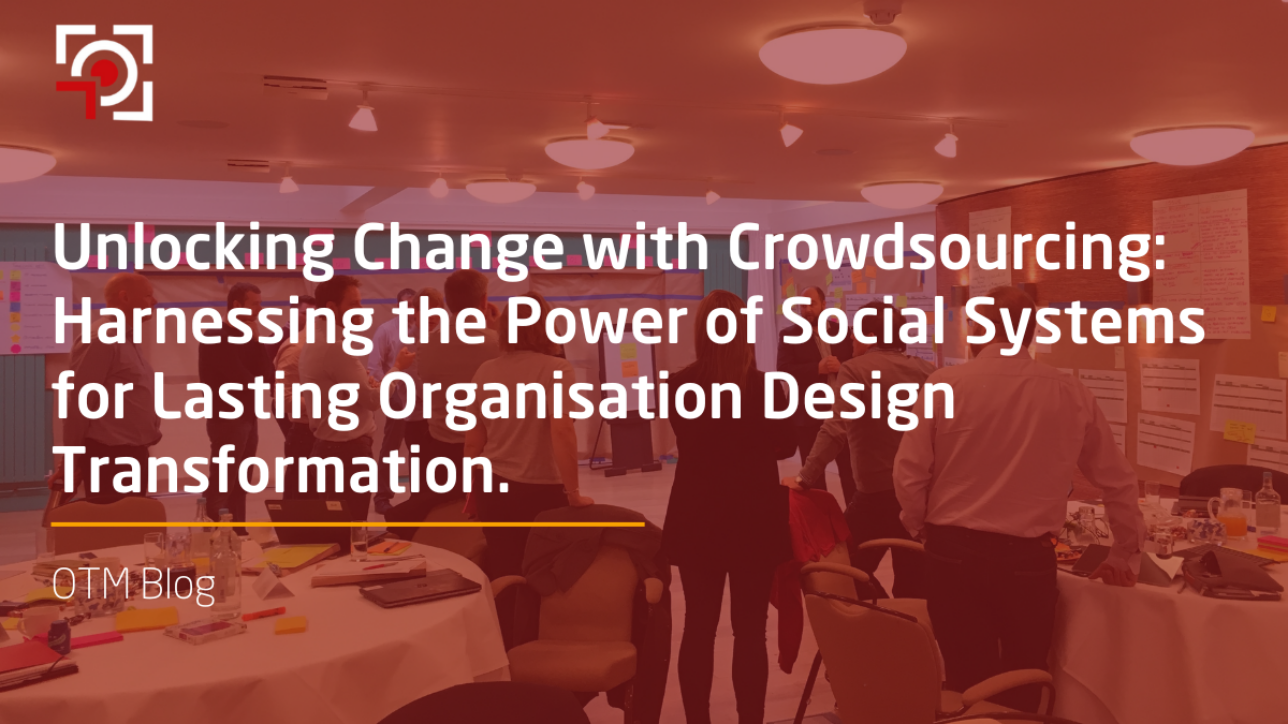Imagine a world where the most effective solutions for organisational change don’t come from top-down directives, but from the collective knowledge, energy and insight of the people already within the system. What if the key to sustainable transformation lies in harnessing the untapped potential of your organisation’s social network?
In this blog, we explore how crowdsourcing can become a powerful tool for driving real, lasting change. Through a series of thought-provoking questions—paired with an insightful vlog coming up in the next couple of weeks —we’ll uncover how leveraging the strength of your organisation’s social system can turn readiness for change into a movement. Let’s dive into the heart of organisational design and rethink how change really happens.
1. What is actually happening in change efforts across businesses?
- Current State: Many organisations approach org design change initiatives in a as a technical way, intervention, often focusing on top level structural changes without considering the social and psychological aspects of change that dramatically influences the quality and impact of the outcome redesign.
- The Problem of “Expert” ways of doing change: Traditional or mainstream consulting style, often relying on an “expert” approach, can actually exacerbate this issue. Consultants swoop in, prescribe quick solutions based on “best practices” from other organisations, and then depart, leaving the client organisation to implement a solution that might not truly fit their unique context. This leads to:
- Compliance instead of Commitment: People feel like change is being done to them, not with or by them, hindering true ownership. Half-hearted attempts to get ‘buy in’ downstream, once all the key decisions have already been made, is smelled a mile off by the workforce, who in turn passively comply with the change but don’t truly commit to it.
- Poor Outcomes: The focus on just high-level technical solutions often overlooks the crucial social system, resulting in superficial transformations that fail to deliver sustainable results.

2. So, what is the real issue?
Organisation redesign can be overwhelming for business leaders. The standard approach is to exert control over the redesign process, do things top-down, or rely on off-the-shelf benchmarks.
Instead, org redesign needs a:
- Shift from “Expert” to “Process” Consulting: Instead of imposing pre-determined solutions that are baked at the top by personalities and egos, organisations need to engage in a genuinely collaborative process of discovery and design, that is more inclusive, rigorous, scientific and time tested.
- Understand the Interconnectedness of the Operating Model: Organisations must recognise that change impacts all elements of the operating model – structure, processes, people, technology, and behaviours culture – and design solutions that address these crucial interdependencies.
3. How does crowdsourcing Organisation Design (OD) fill that gap?
Crowdsourcing (or collaborative OD) provides a powerful way to address this gap by:
- Unleashing Collective Genius: By involving the whole system – employees from all levels and departments, customers, the community and suppliers – organisations can tap into a vast reservoir of knowledge and experience.
- Creating Ownership and Alignment: Collaborative design fosters a sense of shared understanding and commitment, leading to smoother implementation and greater adoption of change later in the change process.
- Developing Internal Capabilities: The process of crowdsourcing OD equips people with the skills and knowledge to drive continuous improvement and adapt the operating model to future challenges. This leads to solutions that are sustainable and not reliant on any external consultant.
4. Key Takeaways
Looking at the real work: Successful organisation design change requires a holistic view of an operating model often focusing on elements like the actual work and the strategy (not just org charts and meetings) and an understanding of how all the parts connect together.
Collaboration is Key: Engaging employees in the redesign process is crucial for building clarity, unlocking collective intelligence, and developing org resilience and skills.
Sustainability Through Ownership: Crowdsourcing OD creates a sense of ownership that leads to more sustainable change.
5. Simple Actionables
Look at the social side of change: Notice how your change efforts are impacting the social and psychological elements of your team and organisation and intentionally design interventions throughout the entire change journey that will transform the social system.
Get more voices to join the change process: Regularly engage your people in assessing how fit for purpose your current operating model is and identifying areas for improvement.
Establish feedback mechanisms: Create channels for regularly collecting feedback at all levels and act on this feedback to ensure continuous learning and adaptation.
Want to know more about Crowdsourcing OD? Join Sharon Davies and Dawn Powell at the ‘Driving Organisational Change for People Leaders’ Conference on 27th November in London! Use this code to get discounted using the following code: SPONSOR200


